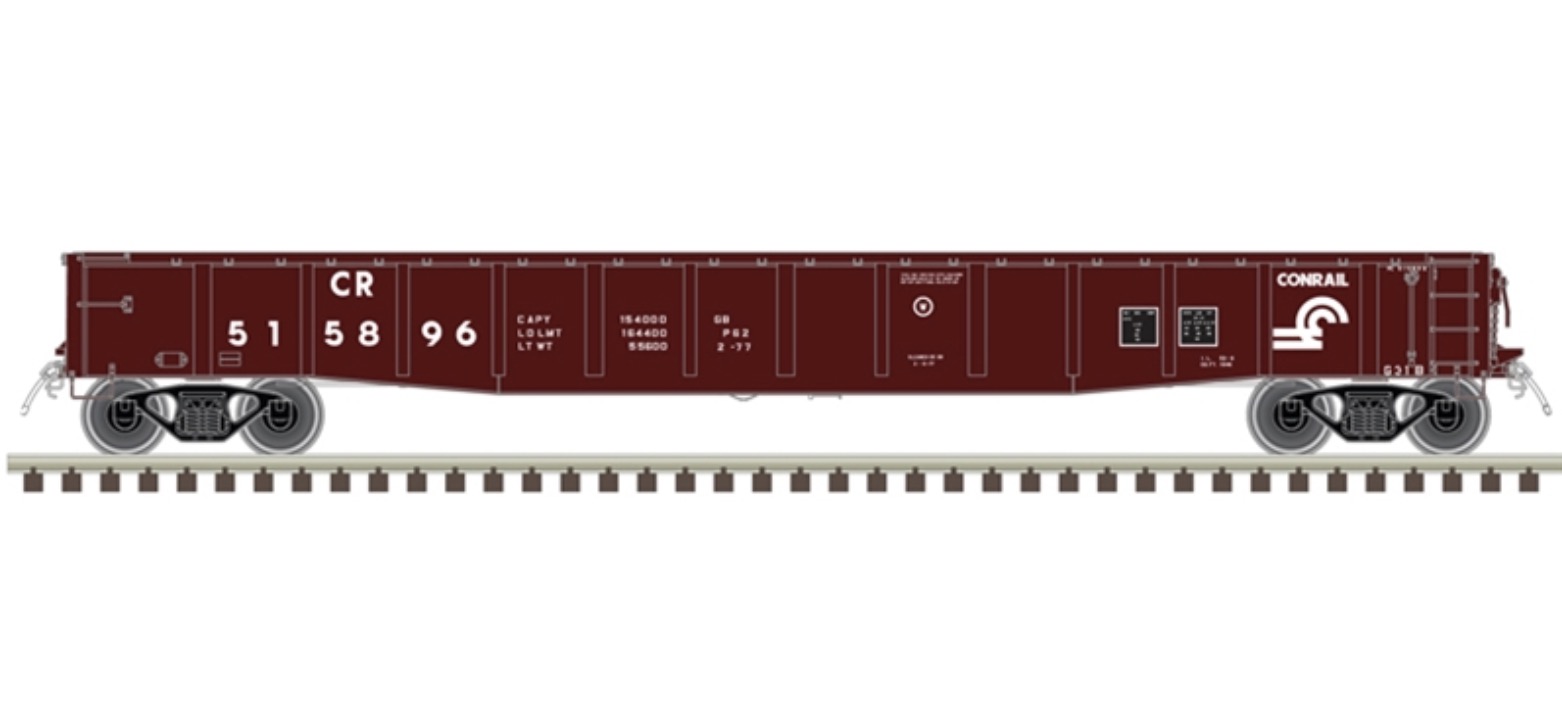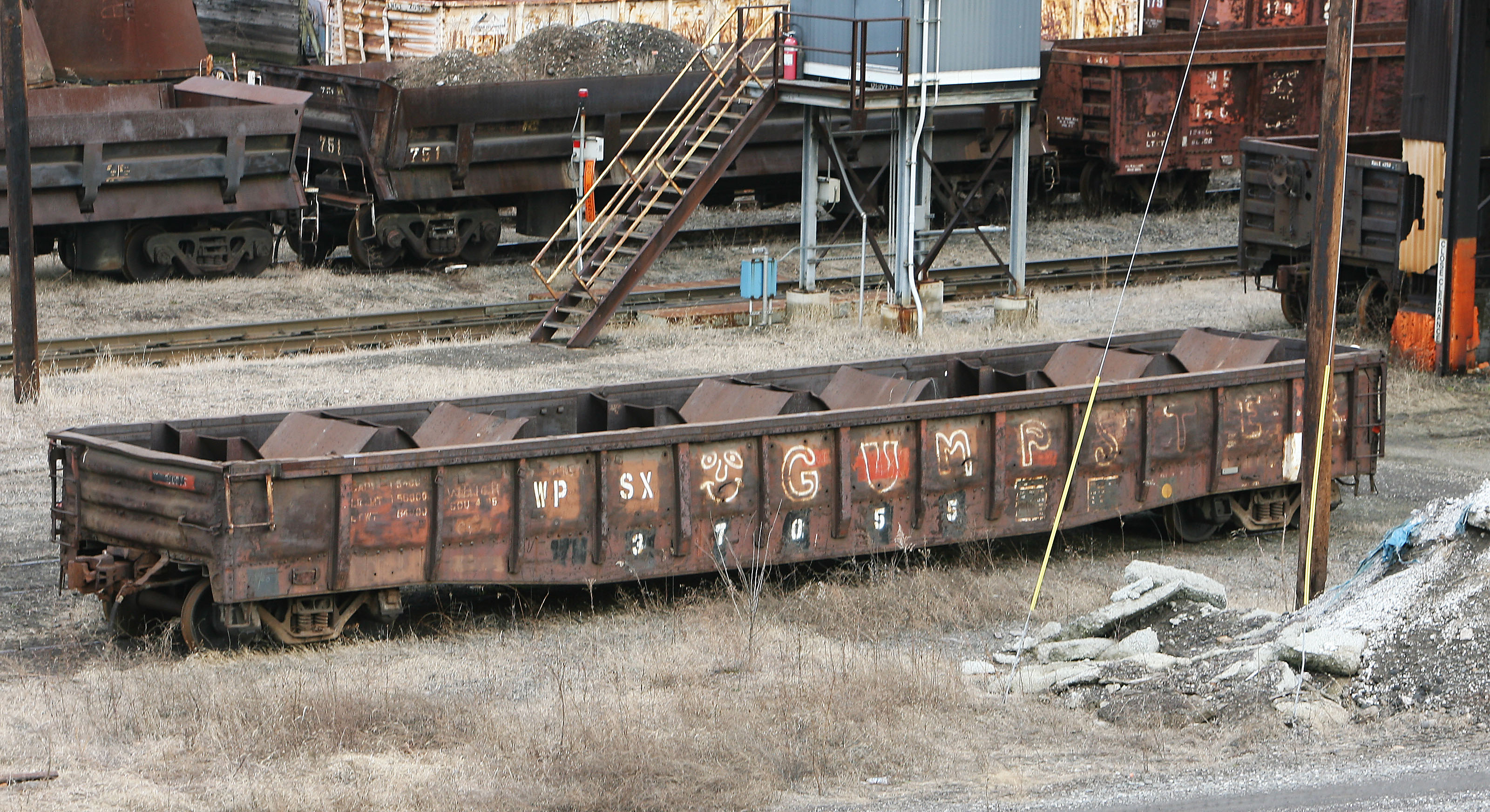Model Information: This model was first announced in 2010, with batch A available in October 2010, and batch B in August 2011. The second release was announced in January of 2015 and made available in late June of 2016.
From the rail up, these N Scale models were engineered to capture the scale fidelity of the prototype. Featuring extremely fine molding, separately applied brake rigging, an etched-metal brake platform and more! Plus, these cars ride on BLMA's NEW 70-Ton Friction Bearing trucks with 33" Metal Wheels featuring a front AND backside wheel profile. If that wasn't enough, check-out the ride height on this model... Just like the prototype!
Features: Ready-To-Run, Injection-Molded Plastic, Fine-Scale Detail, Separate Brake Detail, Chemically Etched Brake Platform, Accurately Painted/Printed, Prototypical Ride Height,BLMA 70-Ton ASF Friction Bearing Trucks, BLMA 33" Scale Profile Metal Wheels, Body-Mounted Brown Knuckle Couplers
From the rail up, these N Scale models were engineered to capture the scale fidelity of the prototype. Featuring extremely fine molding, separately applied brake rigging, an etched-metal brake platform and more! Plus, these cars ride on BLMA's NEW 70-Ton Friction Bearing trucks with 33" Metal Wheels featuring a front AND backside wheel profile. If that wasn't enough, check-out the ride height on this model... Just like the prototype!
Features: Ready-To-Run, Injection-Molded Plastic, Fine-Scale Detail, Separate Brake Detail, Chemically Etched Brake Platform, Accurately Painted/Printed, Prototypical Ride Height,BLMA 70-Ton ASF Friction Bearing Trucks, BLMA 33" Scale Profile Metal Wheels, Body-Mounted Brown Knuckle Couplers
Prototype History: The 52-6 welded 70-ton drop-end gond4ola car as produced by ACF was first produced in 1948 for Pennsylvania Railroad as class G31, PRR alone purchased 11,600 welded cars of this body style in the G31/G31A/G31B/G35, serving the “Standard Railroad of the World” in every corner of North America in many customer applications. Besides PRR, several other railroads also purchased these gondolas from ACF, and some former PRR cars were purchased second-hand by various railroads. Most of these gondolas were phased from revenue service during the 1990s.
Road Name History: The Consolidated Rail Corporation, commonly known as Conrail (reporting mark CR), was the primary Class I railroad in the Northeast U.S. between 1976 and 1999. Conrail is a portmanteau of "consolidated" and "rail" from the name of the company.
The U.S. federal government created Conrail to take over the potentially profitable lines of multiple bankrupt carriers, including the Penn Central Transportation Company and Erie Lackawanna Railway. With the benefit of industry-wide regulatory requirements being reduced (via the 4R Act and the Staggers Act), Conrail began to turn a profit in the 1980s and was turned over to private investors in 1987. The two remaining Class I railroads in the East, CSX Transportation and the Norfolk Southern Railway (NS), agreed in 1997 to split the system approximately equally, returning rail freight competition to the Northeast by essentially undoing the 1968 merger of the Pennsylvania Railroad and New York Central Railroad that created Penn Central. Following Surface Transportation Board approval, CSX and NS took control in August 1998, and on June 1, 1999, began operating their portions of Conrail.
The U.S. federal government created Conrail to take over the potentially profitable lines of multiple bankrupt carriers, including the Penn Central Transportation Company and Erie Lackawanna Railway. With the benefit of industry-wide regulatory requirements being reduced (via the 4R Act and the Staggers Act), Conrail began to turn a profit in the 1980s and was turned over to private investors in 1987. The two remaining Class I railroads in the East, CSX Transportation and the Norfolk Southern Railway (NS), agreed in 1997 to split the system approximately equally, returning rail freight competition to the Northeast by essentially undoing the 1968 merger of the Pennsylvania Railroad and New York Central Railroad that created Penn Central. Following Surface Transportation Board approval, CSX and NS took control in August 1998, and on June 1, 1999, began operating their portions of Conrail.
Brand/Importer Information: In 1924 Stephan Schaffan, Sr. founded the Atlas Tool Company in Newark, New Jersey. In 1933 his son, Stephan Schaffan, Jr., came to work for his father at the age of sixteen. Steve Jr. built model airplanes as a hobby and frequented a local hobby shop. Being an enterprising young man, he would often ask the owner if there was anything he could do to earn some extra spending money. Tired of listening to his requests, the hobby-store owner threw some model railroad track parts his way and said, "Here, see if you can improve on this".
In those days, railroad modelers had to assemble and build everything from scratch. Steve Jr. created a "switch kit" which sold so well, that the entire family worked on them in the basement at night, while doing business as usual in the machine shop during the day.
Subsequently, Steve Jr. engineered the stapling of rail to fiber track, along with inventing the first practical rail joiner and pre-assembled turnouts and flexible track. All of these products, and more, helped to popularize model railroading and assisted in the creation of a mass-market hobby. The budding entrepreneur quickly outgrew the limitations of a basement and small garage operation. Realizing they could actually make a living selling track and related products, Steve and his father had the first factory built in Hillside, New Jersey at 413 Florence Avenue in 1947. On September 30, 1949, the Atlas Tool Company was officially incorporated as a New Jersey company.
In 1985, Steve was honored posthumously for his inventions by the Model Railroad Industry Association and was inducted into the Model Railroad Industry Hall of Fame in Baltimore, Maryland. In addition, Steve was nominated and entered into the National Model Railroad Association Pioneers of Model Railroading in 1995.
In the early 1990s, the Atlas Tool Company changed its name to Atlas Model Railroad Company, Inc.
In those days, railroad modelers had to assemble and build everything from scratch. Steve Jr. created a "switch kit" which sold so well, that the entire family worked on them in the basement at night, while doing business as usual in the machine shop during the day.
Subsequently, Steve Jr. engineered the stapling of rail to fiber track, along with inventing the first practical rail joiner and pre-assembled turnouts and flexible track. All of these products, and more, helped to popularize model railroading and assisted in the creation of a mass-market hobby. The budding entrepreneur quickly outgrew the limitations of a basement and small garage operation. Realizing they could actually make a living selling track and related products, Steve and his father had the first factory built in Hillside, New Jersey at 413 Florence Avenue in 1947. On September 30, 1949, the Atlas Tool Company was officially incorporated as a New Jersey company.
In 1985, Steve was honored posthumously for his inventions by the Model Railroad Industry Association and was inducted into the Model Railroad Industry Hall of Fame in Baltimore, Maryland. In addition, Steve was nominated and entered into the National Model Railroad Association Pioneers of Model Railroading in 1995.
In the early 1990s, the Atlas Tool Company changed its name to Atlas Model Railroad Company, Inc.
Item created by: CNW400 on 2022-12-01 10:06:26
If you see errors or missing data in this entry, please feel free to log in and edit it. Anyone with a Gmail account can log in instantly.
If you see errors or missing data in this entry, please feel free to log in and edit it. Anyone with a Gmail account can log in instantly.











